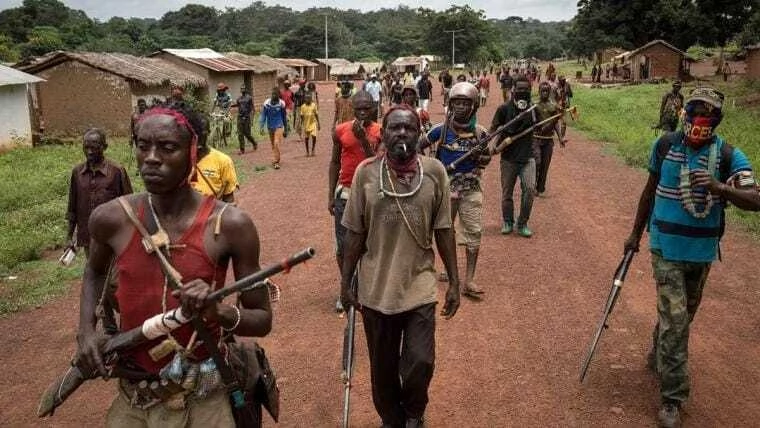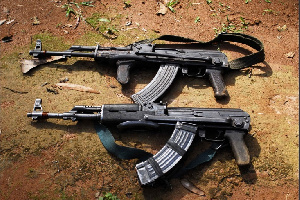Top 10 poorest countries in the world are all in Africa

Data collected by World Global Economy shows that some of the most poverty-ridden places across the globe can be found on the continent. The information is verified and the ranking is based on Gross National Income (GNI) per capita, calculated by dividing a country’s total income by its population.
Just a side fact: Nigeria is ranked the 48th poorest country in the world but that’s a story for another day. For now, let’s focus on the top ten poorest countries in the world, according to Global Finance:
South Sudan
South Sudan [TheBorgenProject]
The very poorest of the world’s poorest countries is South Sudan. I cannot even imagine what it would be like to be Sudanese living in South Sudan. This poor country was born out of an agreement that ended Africa’s longest civil war and was formed on July 9, 2011, from the ten southernmost regions of Sudan.
This oil-rich country is deep in inequality, social and political divisions, corruption, and lack of economic diversity. The majority relies on traditional agriculture and is heavily dependent on international humanitarian aid. Droughts and floods leave nothing to cultivate, consume or trade.
Burundi
Burundi gained independence from Belgium in 1962 but it still cannot be said that Burundi is a free country as it has been wrecked by violence. Even though the civil war ended more than 15 years ago, this poor country is still plagued by endemic corruption and security problems. Cities lack infrastructure, with very limited access to electricity, sanitation, and clean water. Most residents only complete three years of education, and there are 740 deaths per 100,000 live births. A poverty-stricken nation indeed.
Central African Republic
Central African Republic [CrisisGroup]
This is the third poorest and the hungriest in the world with the 2018 Global Hunger Index (GHI) showing very alarming levels. The majority of the 5.4 million population lives at or below the poverty line, with a life expectancy of only 52.9 years. Residents had their lives disrupted by violence since 2013. This brought about severe humanitarian crises with water shortages, lack of sanitation, and one of the highest child mortality rates in the world. People struggle daily to survive. What is surprising though is that this country is rich in gold, oil, uranium and diamonds, but unfortunately, bad leadership has ranked this country among the poorest in the world for the better part of a decade.
Somalia
Somalia [OneCampaign]
Somalia has been with years of political instability, rising inflation, and a poor business environment making the country unreliable for investors and consumers. Somalia is also highly vulnerable to drought, with food scarcity, low vaccination rates, and weak economic forecasts.
Democratic Republic of Congo
Democratic Republic of Congo [UNHCR]
This country is rich in fertile land, thousands of minerals, and precious metals but is still considered a poor country because of all the country has gone through in times past. 6 million lives were lost in fighting Africa’s Great War. Disease and malnutrition, followed by the Ebola outbreak took lots of lives.
The average age of DR Congo is 17 years, with 64% of the 90 million population surviving on less than pocket change. Since their independence from Belgium in 1960, the DRC has suffered decades of dictatorship, political instability and constant violence.
Mozambique
Mozambique [OurWorld]
Despite abundant land, mineral resources, energy, and water access, most of the population still lives in poverty. After a 15-year civil war ended in 1992, corruption and political instability and violence remain. Islamic rebel groups have attacked the north since 2017, killing around 4,000 people and displacing 800,000. Mozambique is plagued with severe weather, flooding, and crop destruction that results in a scarcity of food supplies.
Niger
Niger [TheBorgenProject]
Niger is under threat from desertification. Food insecurity is high, as are disease and mortality rates. Recurrent clashes between the army with the Islamic State (ISIS) affiliate Boko Haram have displaced thousands. In the last decade, nearly half have lived in extreme poverty, which continues to manifest in high mortality rates, endemic malaria, and lack of basic services, sanitation, and access to safe water.
Malawi
Malawi [Britannica]
Malawi is economically constrained and deep in debt. Limited financial capability and a poor business environment cannot support the people. People lack services from heavy private investment and businesses are disrupted by power outages. This country is vulnerable to extreme weather events and inconsistent agriculture. The food scarcity was worsened by the war in Ukraine which hiked commodity prices, and inflation.
Chad
Chad [TheBorgenProject]
Chad has Africa’s tenth-largest oil reserves yet poverty remains widespread, making it the ninth poorest country in the world. After the discovery of oil at the beginning of the century, there was a law requiring consultation before spending public money and reserving 85% of dividends to fight poverty. Sadly, the terrible government since 1990 under Idriss Deby, spent most of the funds on militias instead of public financing, infrastructure development, and provision of better health and education.
Liberia
The tenth on our list is Liberia. This country was ravaged by Ebola with 10,675 people infected and 4,809 people dying between 2014 and 2016. This is a recovering war-torn country that still battles poverty with a third of children stunted by malnutrition. In 2016, half of the population lived below the poverty line and most children completed less than five years of schooling.
More than 42% of Liberians lack access to clean water, which is alarming. There is also persistent malaria and gender-based violence, and the government does nothing to address any of the challenges Liberians face.
Watch the Latest Episode with Kennedy Agyapong below:





